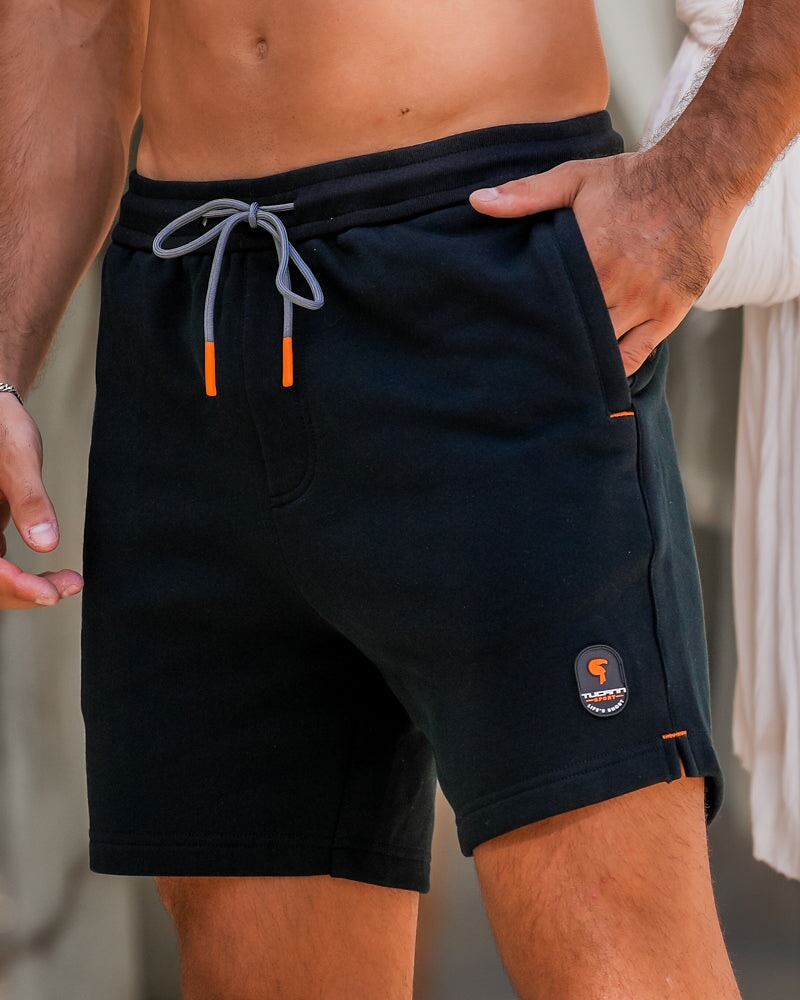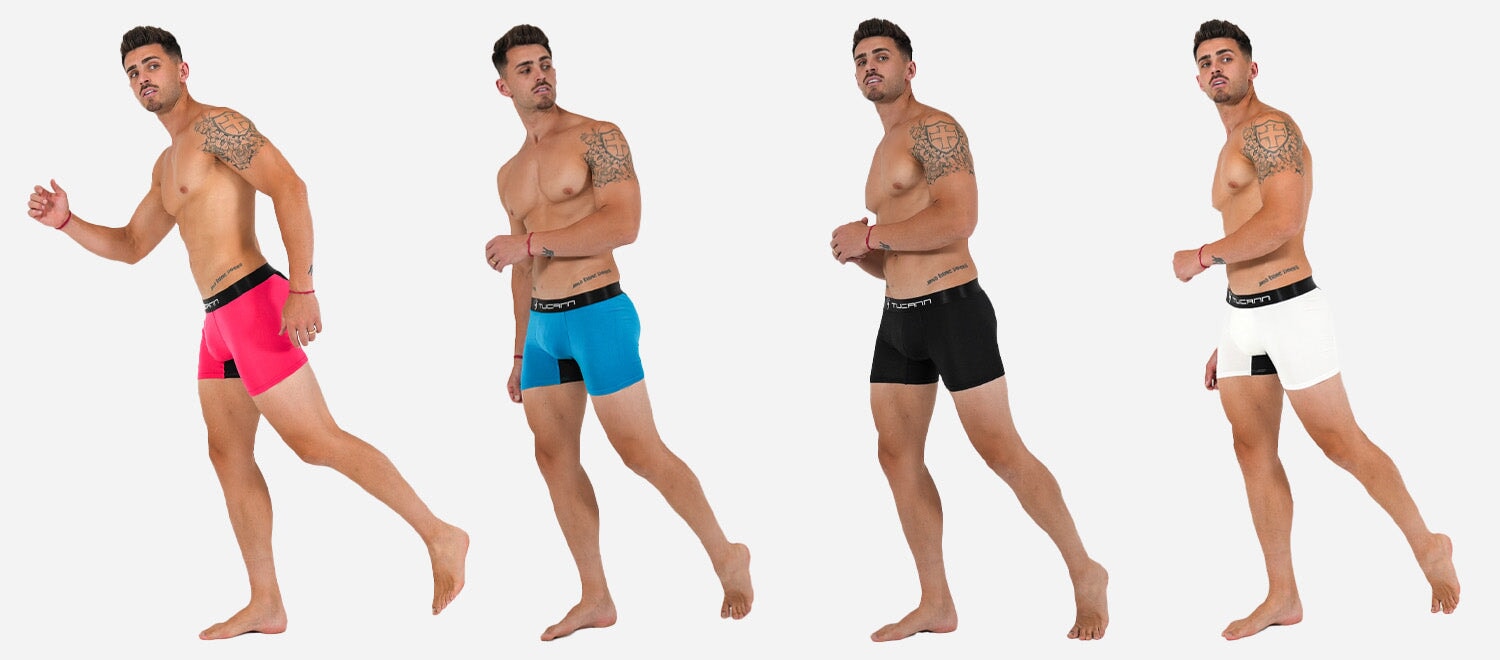Your swimwear works as hard as you do, in the water, on the sand, and under the sun. To keep it performing and looking sharp, proper care matters. At Tucann, we design compression-lined swim trunks that blend comfort, durability, and style. But to extend their lifespan, knowing how to wash them the right way is essential.
Table of Contents
- Key Takeaways
- Understanding Compression-Lined Swim Trunks
- Why Proper Washing Matters?
- Step-by-Step: How to Wash Compression-Lined Swim Trunks
- Common Washing Mistakes to Avoid
- The Tucann Difference: Built to Endure
- Conclusion
- FAQs:
Key Takeaways
- Always rinse swim trunks after each wear
- Avoid high heat or harsh detergents
- Hand wash for best results
- Air dry in the shade
- Skip fabric softeners and bleach
Understanding Compression-Lined Swim Trunks
Compression-lined swim trunks have revolutionized men’s swimwear. Unlike traditional mesh-lined shorts, the compression layer offers extra support, improved blood circulation, and reduced chafing. It’s an ideal choice for active lifestyles, from morning runs to long beach days.
However, this premium design requires equally thoughtful care. Washing them like standard swim trunks can reduce elasticity, fade color, or damage the lining.
According to research, improper washing techniques are one of the top causes of fabric wear in activewear. With the right approach, you can preserve both the fit and feel of your Tucann trunks.
Why Proper Washing Matters?
Your swim trunks are exposed to more than just water, think sunscreen, salt, chlorine, and sweat. Over time, these elements can break down fibers and affect performance. Proper washing helps:
- Maintain fabric stretch and compression support
- Preserve color intensity
- Prevent odor build-up
- Extend overall lifespan
The best men’s compression lined swim trunks are built for endurance, but smart care keeps them in peak condition.
Step-by-Step: How to Wash Compression-Lined Swim Trunks
Compression-lined swim trunks have quickly become a favorite for men who want the perfect balance of comfort, performance, and style. With their built-in compression shorts, these modern trunks prevent chafing, provide better support, and dry faster than traditional mesh-lined swimwear. But to keep them performing at their best, it’s important to know how to properly wash and care for them.
Unlike regular swim trunks, compression-lined versions use advanced materials that can be damaged by improper washing. The outer shell is usually made from quick-dry polyester or nylon, while the inner lining often includes a blend of spandex and elastane for flexibility and compression. Both materials require gentle care to prevent shrinking, stretching, or loss of elasticity.
Here’s a complete guide on how to wash compression-lined swim trunks so they stay comfortable, durable, and fresh all summer long.
1. Rinse After Every Use
Even if you’re not ready to do a full wash, a quick rinse is essential. Saltwater, chlorine, sunscreen, and sweat can all break down the fibers in your swim trunks over time. Rinsing immediately after use helps protect the fabric and prevent odor buildup.
To rinse properly:
- Rinse your swim trunks in cool, fresh water right after swimming.
- Avoid hot water, which can weaken the elastic fibers in the compression lining.
- Gently squeeze (don’t wring) to remove excess water.
This quick step only takes a minute, but can add months of life to your trunks.
2. Hand Wash Whenever Possible
Hand washing is always the safest way to clean compression-lined swim trunks. The gentle approach helps maintain the elasticity and structure of the compression lining while preserving the outer fabric’s color and finish.
Follow these steps for hand washing:
- Pour cold or lukewarm water into a sink or basin.
- Add a small amount of mild detergent, preferably one made for delicates or sportswear.
- Turn the swim trunks inside out to protect the outer shell and focus on cleaning the inner compression layer.
- Gently swirl the trunks in the water for a few minutes.
- Lightly scrub any dirty spots with your hands, especially around the waistband or hem.
- Rinse well with fresh water to eliminate any remaining soap.
Avoid twisting or wringing out the trunks, as this can stretch the fabric or damage the lining. Instead, gently press out the water before drying.
3. Machine Wash Only If Necessary
While hand washing is ideal, machine washing is sometimes unavoidable. If you decide to use the washing machine, make sure to do it carefully to minimize wear and tear.
When machine washing, remember to:
- Use a gentle cycle with cold water.
- Turn the trunks inside out to protect the outer layer.
- Put them inside a mesh laundry bag to avoid snagging.
- Use a mild detergent (no bleach or fabric softener).
- Wash them with similar fabrics, such as other swimwear or activewear, not with towels, jeans, or heavy items.
The goal is to reduce friction and heat, both of which can weaken the elastic fibers in the compression lining.
4. Skip the Fabric Softener
Fabric softener might make clothes feel nice and fresh, but it’s one of the worst things you can use on compression-lined swim trunks. It coats the fibers with a thin layer that traps residue and prevents moisture from evaporating properly.
Why to avoid fabric softener:
- It reduces the elasticity of the compression lining.
- It causes build-up that traps odor and bacteria.
- It interferes with the fabric’s quick-dry properties.
If you want to keep your swim trunks soft and fresh, a better alternative is to use a small splash of white vinegar during the rinse cycle, which helps eliminate odor naturally without damaging the material.
5. Air Dry Only
Heat is the enemy of compression fabric. High temperatures can cause shrinkage, fade colors, and break down elastic fibers over time. That’s why air drying is the best (and safest) method.
To air dry correctly:
- Lay the swim trunks flat on a clean towel and gently roll the towel to absorb excess moisture.
- Then, hang or lay them flat in a shaded, well-ventilated area.
- Avoid direct sunlight, which can fade colors and damage the fibers.
- Never use a dryer, even on a low setting, the heat can ruin the compression lining.
It might take a little longer for your trunks to dry, but the payoff is longevity and performance.
6. Treat Stains Carefully
Occasionally, you may find stains from sunscreen, sweat, or other elements. Treat them right away to prevent permanent marks without damaging the fabric.
To treat stains safely:
- Mix a small amount of mild detergent or baking soda with cold water.
- Apply the mixture to the stained area using a soft cloth or sponge.
- Gently dab (don’t rub) until the stain begins to lift.
- Rinse thoroughly and let air dry.
Avoid harsh stain removers or bleach, as they can destroy the delicate fibers in both the compression lining and outer fabric.
7. Store Them Properly
Proper storage is just as important as washing. Keeping your trunks clean and dry ensures they’re ready for the next swim and helps prevent mold or mildew.
For best results:
- Make sure the trunks are completely dry before storing.
- Fold them neatly, don’t stuff them while damp into a gym bag.
- Store in a cool, dry place, away from direct sunlight.
- If you wear them frequently, rotate between two pairs to extend their life.
Compression-lined swim trunks can lose their stretch over time if they’re stored while wet or tightly packed, so giving them space to breathe helps them retain shape.
8. Know What to Avoid
Even with the best care routine, a few common mistakes can ruin your compression-lined swim trunks faster than anything else.
Avoid the following:
- Using hot water weakens elastic fibers.
- Leaving trunks soaked for too long encourages bacterial growth.
- Wringing or twisting to remove water.
- Washing with rough fabrics like denim or towels.
- Ironing or tumble drying.
By steering clear of these habits, you’ll help your swim trunks stay in top condition for many summers.
Common Washing Mistakes to Avoid
Even well-made swimwear can lose quality when washed incorrectly. Be mindful of these mistakes:
- Using Bleach or Softeners – Bleach or softeners break down spandex fibers.
- Leaving Trunks Damp – Leads to bacterial growth and odor.
- Twisting or Wringing – Distorts shape and elasticity.
- Using Hot Water – Weakens compression lining.
At Tucann, we design swim trunks with reinforced stitching and quick-dry materials that recover well after every wash, as long as they’re handled with care.
The Tucann Difference: Built to Endure
At Tuccan, our compression lined swim trunks combines advanced materials with precision design. Each pair is:
- Compression-Lined for comfort and performance
- Crafted with premium stitching for durability
- Quick-drying and fade-resistant
- Designed for flexibility in and out of water
We’ve tested our swimwear through countless conditions, from tropical humidity to coastal salt exposure, to ensure long-lasting quality. Tucann stands for more than just style. It’s about reliability, comfort, and craftsmanship that move with you.
Conclusion
Caring for your compression-lined swim trunks is about more than keeping them clean, it’s about preserving performance and comfort. With the right washing routine, your shorts will retain their fit, stretch, and color season after season. At Tucann, every design reflects premium craftsmanship made to last. Treat your trunks well, and they’ll return the favor, in every dive, lap, or beach run. Reach out to us today to shop Tucann Compression-Lined Swim Trunks and experience lasting quality that performs as good as it looks.
FAQs:
Can I machine wash compression-lined swim trunks?
It’s best to hand wash compression-lined swim trunks. If you need to use a washing machine, select a delicate cycle with cold water and place them in a mesh laundry bag for added protection.
Can I use regular detergent on my swim trunks?
No. You should use a gentle, activewear-safe detergent. Regular detergents may contain chemicals and harsh agents that can break down elastic fibers and reduce the life of your swim trunks.
How should I dry Tucann swim trunks?
Air dry your Tucann swim trunks flat or hang them in the shade. Avoid tumble drying or exposing them to direct sunlight, as this can damage the fabric, fade colors, and reduce stretch.
How often should I wash compression-lined swim trunks?
Wash compression-lined swim trunks after every swim or intense activity. For light wear, washing every 2–3 uses is usually sufficient, provided you rinse them thoroughly in fresh water after each use.
What’s the best way to remove sand from swim trunks?
To remove sand from swim trunks, rinse them in fresh water, gently shake out any trapped grains, and soak briefly if needed. Avoid scrubbing or wringing, as this can damage the stitching and fabric.
Do Tucann swim trunks lose compression over time?
Tucann swim trunks are designed to maintain their compression when cared for properly. Follow the recommended washing and drying instructions to preserve both compression and overall durability.


































